Flatbed Variety
Topic 4373 | Page 14

Winches on one side or not, sounds like you're working for a pretty awesome company. I figure I'll be dealing with live loads for a little while here until I can build enough experience to transfer to a better company.
Dude, this is what appealed to me about this particular job. The way it is set up it takes a lot of the frustrating things that flat-bedders deal with out of the equation. I have very little wait time. All my loads are pre-loaded, I drop my current trailer, and pick up the loaded one. I still am responsible for securing and tarping it, but it is inside a building and I'm not dealing with the elements as much. Also about fifty percent of the time I am pulling a "Connestoga" type trailer which eliminates the tarping procedures. In fact in the month of January I never tarped a single load!
If they don't have a back haul load for us, they don't leave us sitting and waiting on a load. They will dead head us right back to the plant in Louisiana. I've deadheaded as much as fifteen hundred miles just because they need me back to grab another pre-loaded trailer. They also have a very generous quarterly bonus program which has several metrics that go into calculating that bonus pay, but your fuel mileage is one of those measurements. And as often as they are deadheading us back, we are getting some great mileage which produces some killer bonus checks.
Deadhead:
To drive with an empty trailer. After delivering your load you will deadhead to a shipper to pick up your next load.
HOS:
Hours Of Service
HOS refers to the logbook hours of service regulations.
Dude, I'm impressed that you noticed! Only a true flat-bedder would notice such small but important things.
I actually prefer alternating the winches, but for some strange reason all the trailers this company has ordered were ordered specifically to have all the winches on one side - the other side doesn't even have the rail on it for the winches. These guys are kind of new to the flat-bed side of the business, and there's still a few things they haven't quite figured out yet.
I agree with the idea that alternating the winches is always the best way to secure your load though.
I just noticed that your sliding tarp is gone.... Are you not on the dedicated run anymore?
And on the note of winches, if you are going to have fixed winches, you better put a BUNCH of them on both sides. They never seem to line up with the pallets. You would think that they would put them on the curb side to at least get you out of traffic...
I too like to alternate, depending on the load.
On most of the stuff that we haul, I like to have the chain binders on one side just because I can see them better on the drivers side. When hauling equipment it does not matter as you will have them on both sides or under. With bridge beams you MUST alternate. You do not want it pulling a beam to one side only as most of them are narrow.
I have 2 chain sizes on my truck also. I have 8 each 3/8" chains and 8 each 5/16" chains. The 3/8" chain gets the most use so they are all on the driver's side of the head ache rack along with 8 binders. The other side is the same only with 5/16" chain. The smaller chain usually only comes out on 2 occasions, hauling concrete pipe or scrap metal. It is just lighter to throw over the load and it is not overkill like the 3/8 chain would be since I have to put so many of them on there anyway.
Dedicated Run:
A driver or carrier who transports cargo between regular, prescribed routes. Normally it means a driver will be dedicated to working for one particular customer like Walmart or Home Depot and they will only haul freight for that customer. You'll often hear drivers say something like, "I'm on the Walmart dedicated account."
Pat, I'm still running that dedicated account but we use both regular flat-bed trailers and the Connestoga style ones.
Pat, I'm still running that dedicated account but we use both regular flat-bed trailers and the Connestoga style ones.
I was sure jealous of those Conestoga trailers when I was at that place tarping!
Here's a recent load, 7 trailers from Oklahoma to North Carolina. This shipper secures the load for you, and did a good job at that.
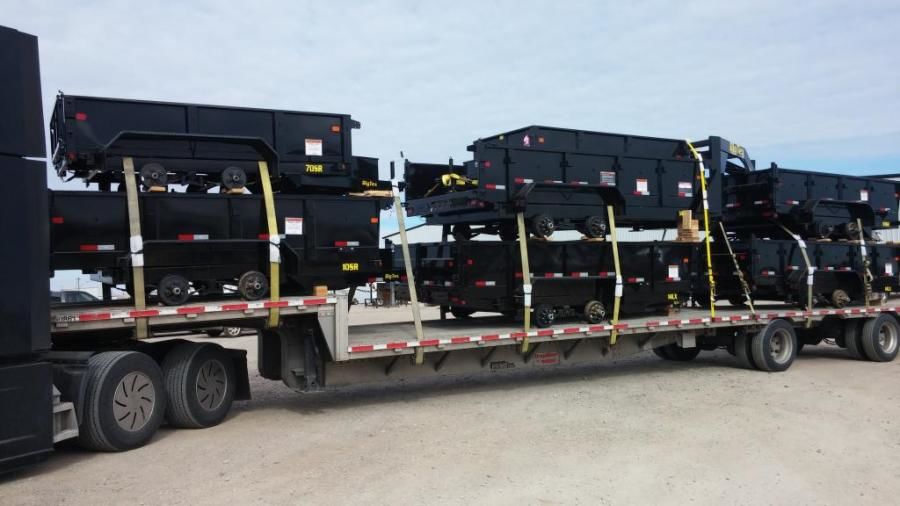
Shipper:
The customer who is shipping the freight. This is where the driver will pick up a load and then deliver it to the receiver or consignee.
HOS:
Hours Of Service
HOS refers to the logbook hours of service regulations.Bud, I was sorry to have missed you that day. If you come back some day make sure and check in with me. Tarping is never easy, but over at that plant you kind of feel like a monkey in a cage. Sometimes those guys in the suits come up with safety measures that take all the fun out of the job!
HOS:
Hours Of Service
HOS refers to the logbook hours of service regulations.
Well, today was interesting to say the least. I hauled my longest load to date..... 107 feet nose to tail. That is 42 feet longer than the average semi. Talk about off tracking... Well here is the photo you have been waiting for, this is an old rail flatcar that had been converted to be used as a temporary bridge for road projects.
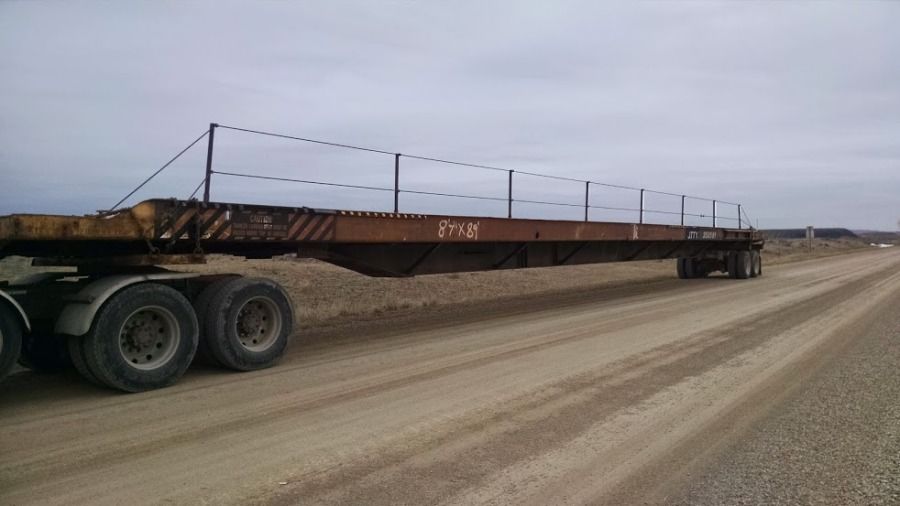

Delivered some prefab walls today.
I meant to take a picture of the flat steel I hauled last week, but forgot in all the busy-ness. So here's a couple of pics of the toughest load I've had to deal with so far - tough not because of tarping or chaining or ice or snow, but because one of the boards under the load broke, causing it to shift. Cost me time and money, too.
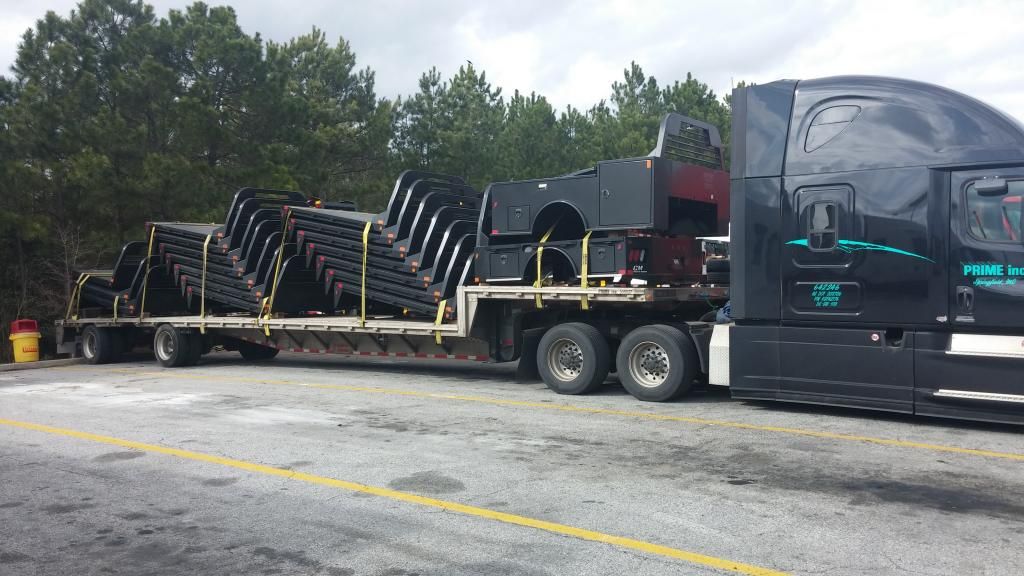
Here's the wrong way to load these things when one is shorter than the others:
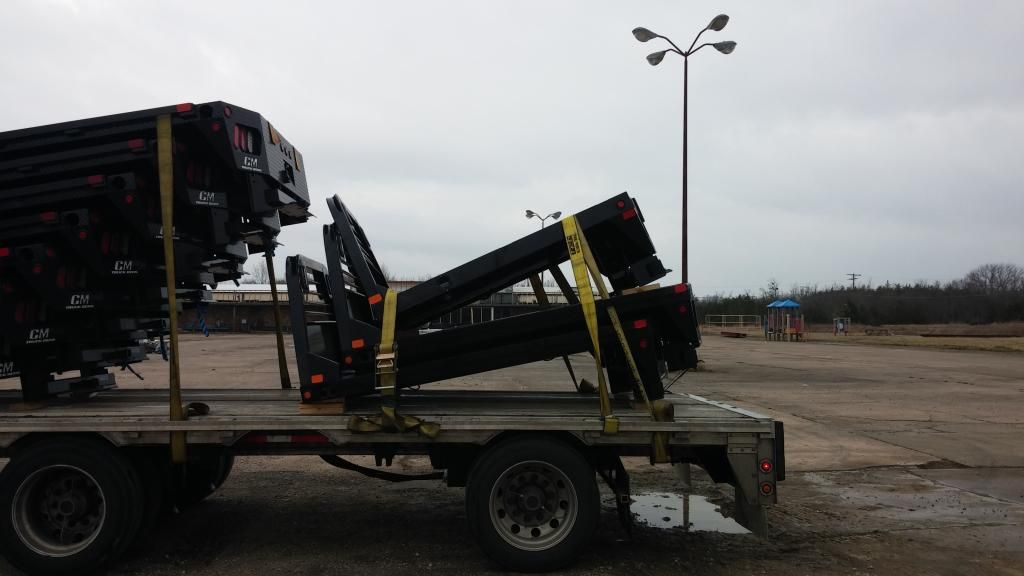
Here's the right way:
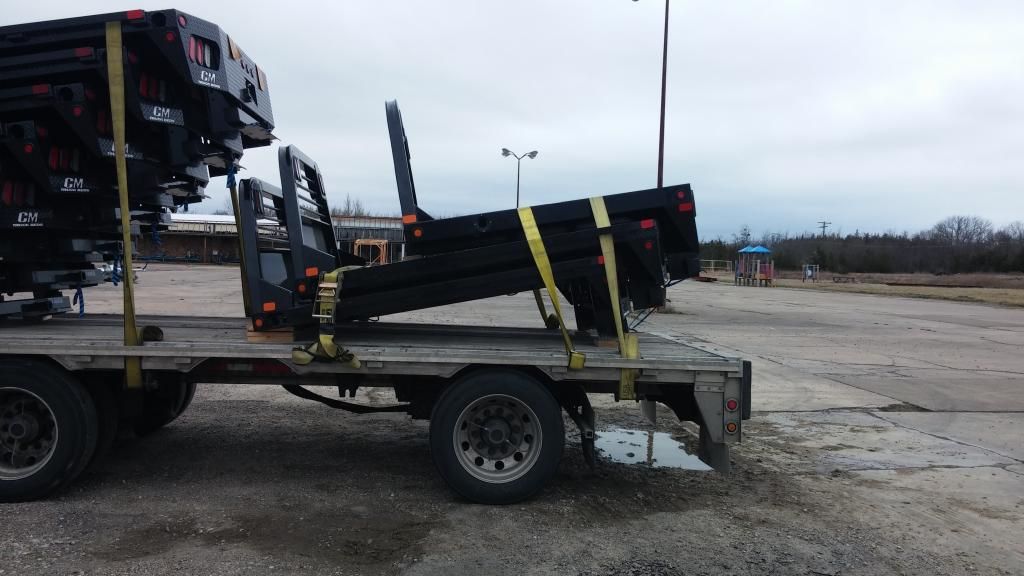
This lesson cost me $350, but I'll offer it to you for free: pay attention when someone is loading your truck, and tell them if you don't like the way they're doing it.
New Reply:
New! Check out our help videos for a better understanding of our forum features

















Preview:
This topic has the following tags:
Advice For New Truck Drivers Choosing A Trucking Company Flatbed Hard Lessons Learned Load Securement Photos Truck Driving Stories







 TT On Facebook
TT On Facebook
I would have already moved some winches except the trailers are only set up to accommodate them on one side. It's kind of strange how the trailers are set up, but they were obviously specified to be that way. Most of the time I'm hauling aluminum extrusions, and picking up pre-loaded trailers. Just about the only time I'm doing a live load is if they happen to get me a back-haul like the load of brick pavers that I mentioned earlier.
HOS:
Hours Of Service
HOS refers to the logbook hours of service regulations.